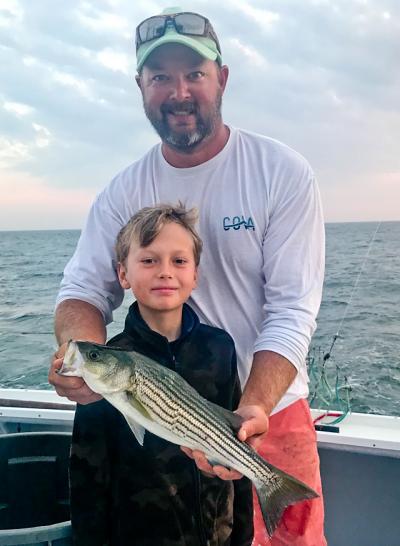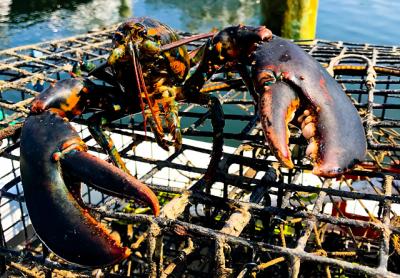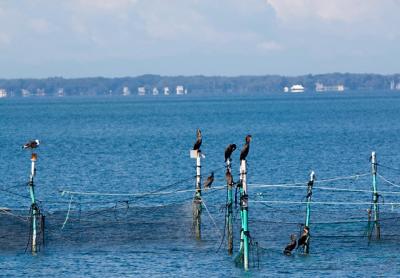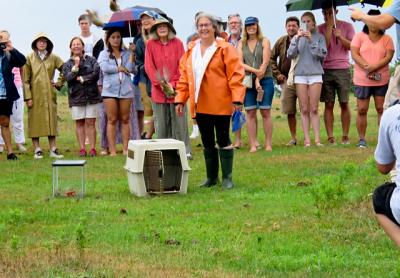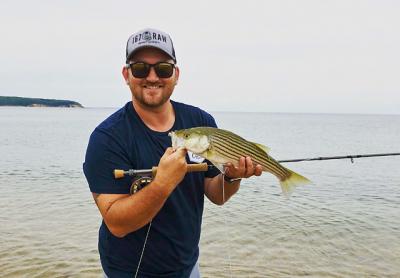Nature Notes: Proceed With Caution
Nature Notes: Proceed With Caution
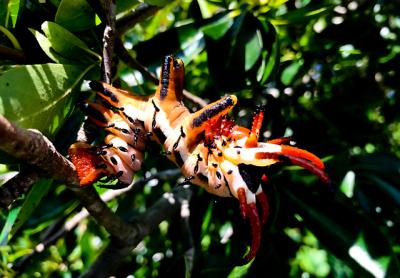
Nature has many survival tricks up its sleeve when it comes to the possibility of being eaten. `We all know how the monarch butterfly is able to escape predation and fly 100 miles or more in a day during its annual migration without suffering a single molestation. No shark in its right mind would ever consider attacking and devouring a lionfish, and South American snakes that prey on amphibians slink away when confronted by brightly colored tree frogs. The same holds true for a Pacific rattlesnake when it suddenly comes upon a red-bellied California newt. It’s an old trick, but it works wonders: Develop glands that produce a poison or feed on something toxic and store the poison rather than metabolize it.
There is a newer trick to prevent predation, based on the older one. Be a different butterfly species, but closely resemble the poisonous one. The common viceroy butterfly is almost the spitting image of the monarch butterfly, Danaus plexippus, but is in a completely different genus, Limenitis. In order to take advantage of its mimicry, it has to exist in the range of the former. Why? Because the monarch butterfly contains a poisonous and bitter-tasting glycocide produced by milkweed plants.
The monarch larva feeds exclusively on milkweeds and stores the glycocide in its flesh. When it pupates, it conserves the poison, and when the pupa or cocoon splits open to reveal a mature butterfly, that butterfly is poisonous and bitter tasting! If a naive predator — say, a recently fledged insectivorous bird — comes along and tries to feed on it, it will promptly spit it out. The fledgling immediately learns to avoid any butterfly that looks like that monarch. On the other hand, if there are no monarchs around and it feeds on the viceroy, it will feed on that species for the rest of its life, until, say, it encounters a monarch that happens by and tries to eat it.
There is a third trick that derives from the first and second ones. Color yourself gaudily and sport appendages that look like spines. The lionfish is gaudily colored and its dorsal fin spines secrete a potent poison. If you live around warm water reefs, look and act like a lionfish and there is a good chance you’ll live a long life. On land, many caterpillars that are perfectly harmless are brightly colored and otherwise outfitted to appear menacing. If you’re an insectivore, why not pick on something that is drabber and not as frightening?
The hickory horned devil is about as evil and frightening looking as caterpillars come, yet it is perfectly harmless. Its appearance keeps it safe. The moth that develops from the horned devil is large and pretty in its own right, red-brownish with yellow specks. Its coloration may protect it, but that remains to be demonstrated scientifically.
There are several species of poison arrow, or poison dart, frogs in South America. They are all brightly attired in warning colors. The poison from these frogs was used on the tips of arrows for hunting and subduing not only wild animals for food, but also humans in battle.
Not all warning signs are seen; some are heard. The rattle from the tail of a rattlesnake is a distinct sound that can be heard from several feet away or more. Long Island used to have timber rattlesnakes, but they disappeared before the turn of the 19th century. Some snakes hiss. The eastern gopher snake, which feeds mostly on toads, is found locally. It hisses and puts on a cobra-like display that deters predators, yet it is perfectly harmless.
Sometimes, as with the California newt, the red means the real thing. A camper in Northern California made coffee from stream water and then died from drinking it. The cause of death was determined to be poison from one of these newts that was later found in the pot from which the coffee came. The red on the underside of the abdomen of a female black widow spider is also a red-letter warning sign. The male is small and brownish colored.
On Long Island the black widow population has been increasing as of late. I come across two or three each year. The red spot on eastern black widows tends to be on the rear tip of the abdomen or even a little above the rear tip. When I was a boy growing up in Mattituck on the North Fork I was always examining nooks and crannies for this or that organism and came across a lot of spiders, but never a black widow.
There are several species of milkweed beetles and milkweed bugs that feed on milkweed and are red-orange and black. They are very obvious when feeding during broad daylight, and birds generally don’t fancy them.
The buzzing of bees and the whine of mosquitoes are sometimes warning signs. The high pitched whine of some mosquitoes is not so much a warning but uttered to stir up action in the would-be prey so that the blood circulates near the surface and thus is more easily obtainable by the syringe that is part of the mosquito’s mouthparts.
Horror movies use high-pitched screams, groans, taps, and other sounds to get our dander up. Trickling red blood often follows such sounds. Perhaps, our respect for the bright red spot of the black widow derives from a squeamishness regarding oozing blood. Orange is the widely accepted warning color when it comes to the possibility of danger. Perhaps if bright red were substituted for all of the orange in warning signs, we’d turn around and go the other way instead of proceeding on with due caution

